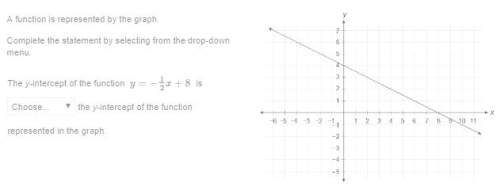
Mathematics, 02.12.2019 05:31 KingKD
Ascientist is conducting an experiment designed to produce a gene mutation in bacteria. the chance that his experiment will cause a gene mutation in a bacterial colony is 70%. he uses identical treatment on 10 isolated colonies of the bacteria. the scientist considers his results satisfactory if the mutation occurs in at least 8 of the colonies.
let x be a random variable representing the number of bacterial colonies that have mutated.
a.) explain why x is a binomial random variable:
-specify, in words, what is a trial in this scenario
-identify n (the number of trials)
-specify, in words, which outcome of a trial would be defined as a "success"
-explain why p (is the probability of success) is the same in every trial
-identify p (the probability of success)
b.) what is the probability the scientist will consider his results satisfactory?
c.) what is the expected value of mutated bacterial culture in this sample?
d.) fill in the blanks of the following sentence:
"if the gene mutation experiment was repeated many times, each time using a sample of 20 isolated bacterial cultures, the average number of mutated cultures in a sample would approach "

Answers: 3
Another question on Mathematics


Mathematics, 21.06.2019 18:50
Astudent draws two parabolas on graph paper. both parabolas cross the x-axis at (-4, 0) and (6,0). the y-intercept of thefirst parabola is (0, –12). the y-intercept of the second parabola is (0-24). what is the positive difference between the avalues for the two functions that describe the parabolas? write your answer as a decimal rounded to the nearest tenth.
Answers: 2

Mathematics, 21.06.2019 21:20
Paul’s car is 18 feet long. he is making a model of his car that is 1/6 the actual size. what is the length of the model?
Answers: 1

Mathematics, 21.06.2019 23:40
The frequency table shows the results of a survey asking people how many hours they spend online per week. on a piece of paper, draw a histogram to represent the data. then determine which answer choice matches the histogram you drew. in order here is the.. hours online: 0-3, 4-7, 8-11, 12-15, and 16-19. frequency: 5, 8, 10, 8, 7 answer for the question is in the picture! : )
Answers: 2
You know the right answer?
Ascientist is conducting an experiment designed to produce a gene mutation in bacteria. the chance t...
Questions

Biology, 24.09.2019 18:30

Mathematics, 24.09.2019 18:30

Mathematics, 24.09.2019 18:30






History, 24.09.2019 18:30

Mathematics, 24.09.2019 18:30





Social Studies, 24.09.2019 18:30

History, 24.09.2019 18:30








